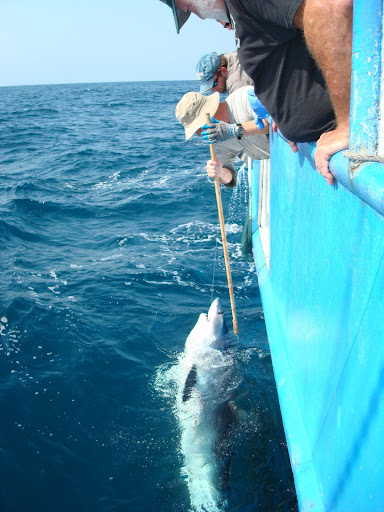
Three weeks ago I got to join the National Marine Fisheries Service out of San Diego for their shark survey. It was 9 days on a commercial boat with the crew and 5 other scientists. We did two sets a day,4 miles of long line gear to catch Thresher, Mako and Blue sharks. A few times we did a set after dark too.
IT WAS AWESOME! I had never been on a long liner before, I liked that mode of fishing. I got to see a ton of super cool things. I got to do everything from baiting hooks to tagging sharks. It was the coolest thing to bring an animal up on the line, tag it, measure it, and then release it and watch it swim away. Some of the bigger animals would hang out by the boat for a little while with their tagged dorsal sticking out of the oceans surface. A few of them even attacked the cradle after getting back in the water. One particularly large Mako tried bitting the boat several times. The largest shark I helped to restrain was a beauty, 2.3 meter Mako. Even the really small animals are very very strong. So while two men held down the head and mid-body I was in charge of just the tail, the last 2 feet of the animal. Despite my greatest efforts the shark had no trouble lifting its tail up 5 inches or so raising me along with it. My 130 pounds of pressure didn't count for much.
I didn't ever think I would get the opportunity to tag sharks, there just aren't very many people that do that kind of work (it cost a lot, there is a load of paperwork involved for many species, and it is very competitive). The experience of tagging sharks is one of the most amazing things I have ever done. I just love sharks, seeing them, learning about them, seeing more of them, actually getting to work on live animals. AMAZING, FANTASTIC, FUN, AND WOW!
There is a lot more to say about my trip, but I will let the pictures and videos take care of that.
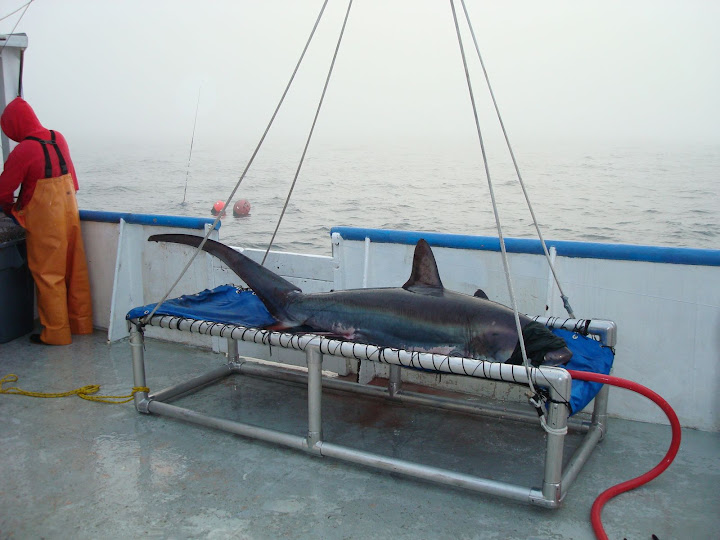
This is a Thresher shark, the first big shark we got. They use their tails to stun their prey, so for their size their teeth are actually really small, but their tails are incredibly long.
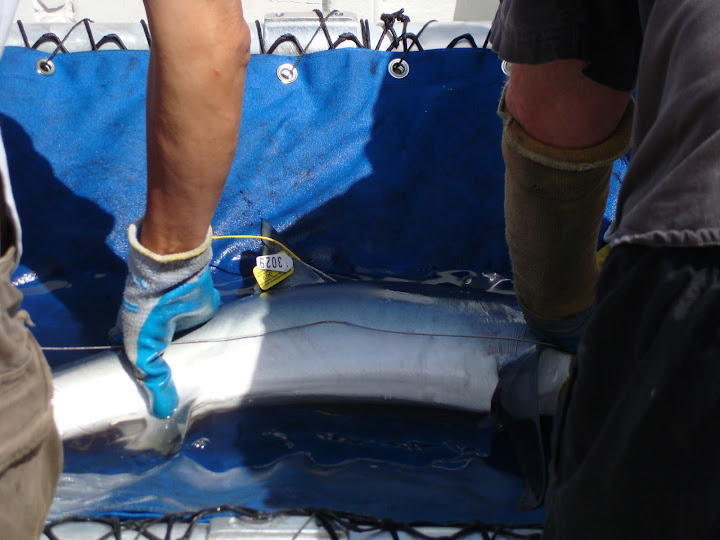
This is the first shark that I tagged, it is a young Blue shark.
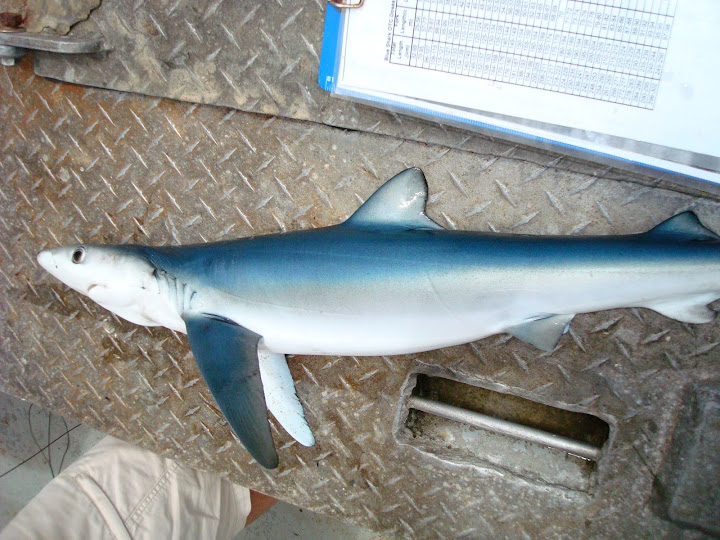
This is another young blue, not the most original name, but fitting.
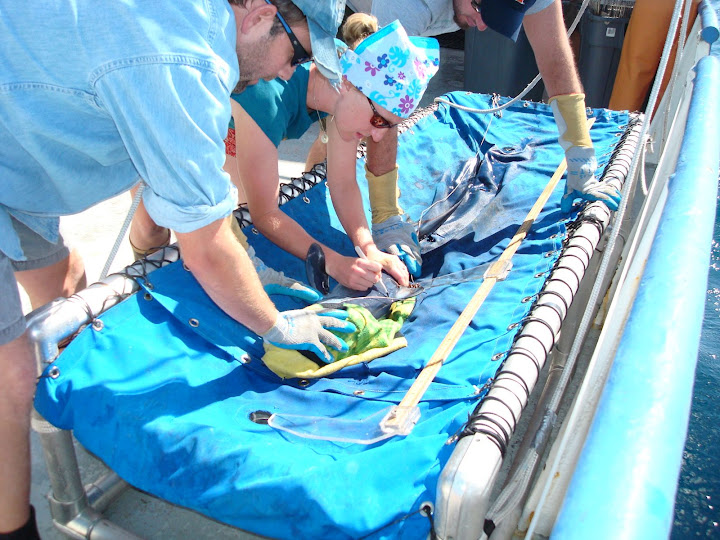
In action, tagging a blue shark.

Two of the deckhands spent every spare minute fishing. This is a flying fish they caught, just one of the other cool things. The first night out we watch a sea lion chasing the flying fish around the boat for 30 minutes or so, the sea lion never came close to getting one.

Here is a satellite tag getting put on. It is a pop off tag, which means in a few months the cord attaching it will be cut and it will float to the surface. Data is transmitted via satellite every time the shark surfaces, but if the tag is retrieved they can get a lot more information.

Mako shark with sat tag happy to get back into the ocean. You can see where the data from the fish we tagged of the
Tagging of Pacific Pelagics (TOPP) website.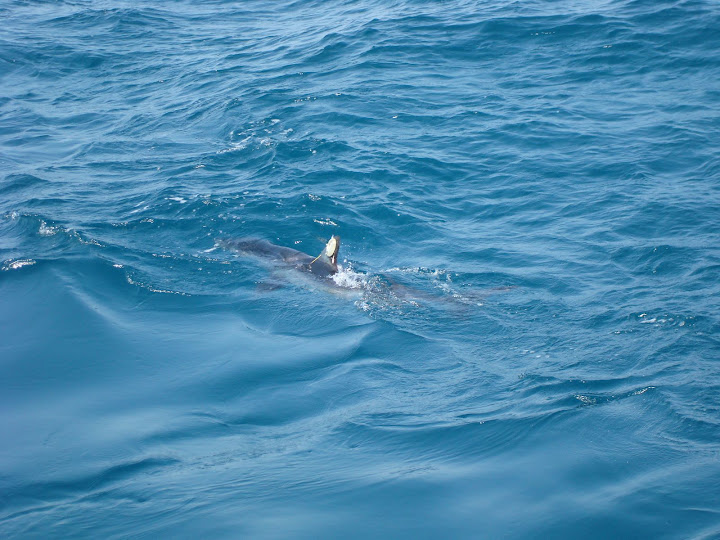
Go shark and send back lots of data!

This is a shot of John and I enjoying the sunny southern CA weather in between sharks. The weather in southern Cali is pretty nice, even on the water.
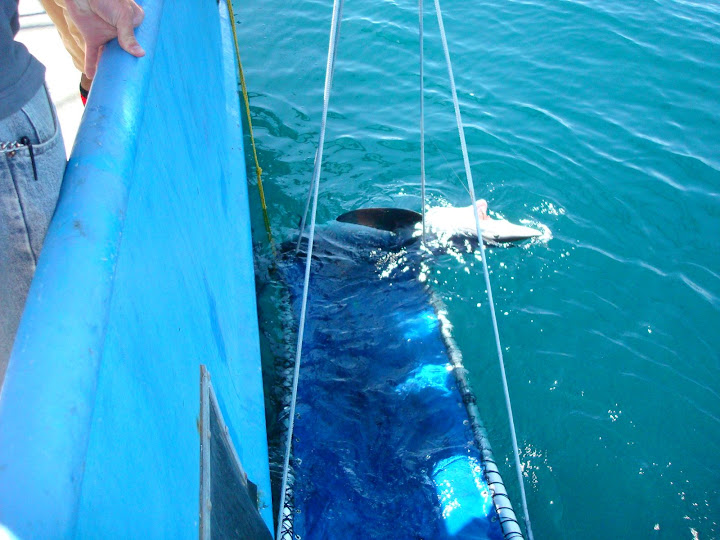
The big ones have to be brought up in the cradle. It can be a bit tricky.

This is a big blue shark,
Prionace glauca.



Once they shark is in the cradle and brought on the boat we put a pvc hose in their mouth to provide oxygen. The eyes are covered for two reasons, the first is to protect them, the second is to protect us if they cant see us it will be harder for them to aim a bite.

There are the big ones like the two above and then there are the great big ones.

We estimated this Mako to be 280 centimeters. There was never any question that it was too big to bring on board, but they were still able to get a satellite tag in!
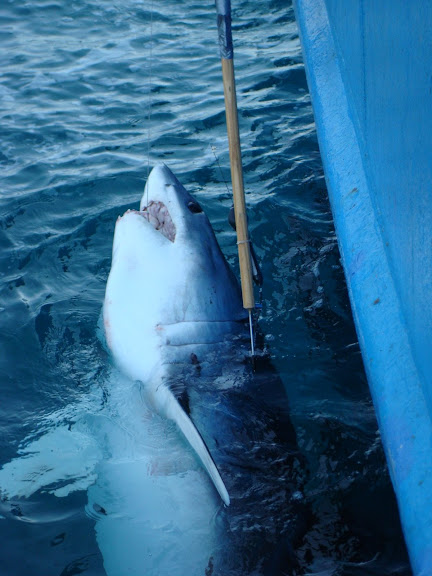
Beautiful animal!
